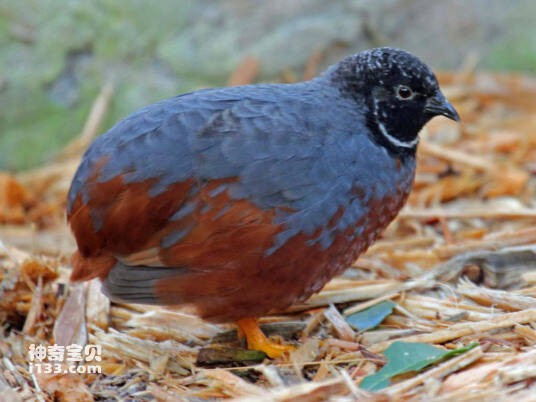Synoicus adansonii
IUCN
LCBasic Information
Scientific classification
- name:Synoicus adansonii
- Scientific Name:Synoicus adansonii,African Blue Quail,Blue Quail
- Outline:Landfowl
- Family:Chickeniformes P.family Cyanothorax
Vital signs
- length:12-15cm
- Weight:33-48g
- lifetime:No textual research information is available
Feature
Distribution and Habitat
Origin: Angola, Burkina Faso, Burundi, Cameroon, Central African Republic, Chad, Congo, Cote d 'Ivoire, Gabon, Ghana, Guinea, Guinea-Bissau, Kenya, Liberia, Malawi, Mozambique, Nigeria, Rwanda, Sierra Leone, South Africa, Sudan, United Republic of Tanzania, Togo, Uganda, Zambia, Zimbabwe.
Wandering: Ethiopia, Mali.
It inhabits the African wetlands and grasslands south of the Sahara Desert.
Appearance
The African blue-breasted quail is 12-15 cm long; Males weigh 33-48 grams and females weigh 44 grams. Hermaphroditic, male body back and breast dark blue, chest large maroon. Females generally have a mottled coloration of brown and light gray. The beak is iron gray and the legs are orange red.
Details
African blue-breasted Quail (Synoicus adansonii) : African Blue Quail, Blue quail, no subspecies. It was once a subspecies of the blue-breasted quail, but was classified as a separate species in 2014.

African blue chest quail in the morning and night in the open for grain, grass seeds, etc., also eat insects, spiders, termites. Fly fast and low in a straight line. It feeds on grains, grass seeds, insects, spiders, etc.
Listed on the International Union for Conservation of Nature (IUCN) 2016 Red List of Threatened Species ver 3.1 - Not Threatened (LC).
Protect wild animals and eliminate wild meat.
Maintaining ecological balance is everyone's responsibility!








